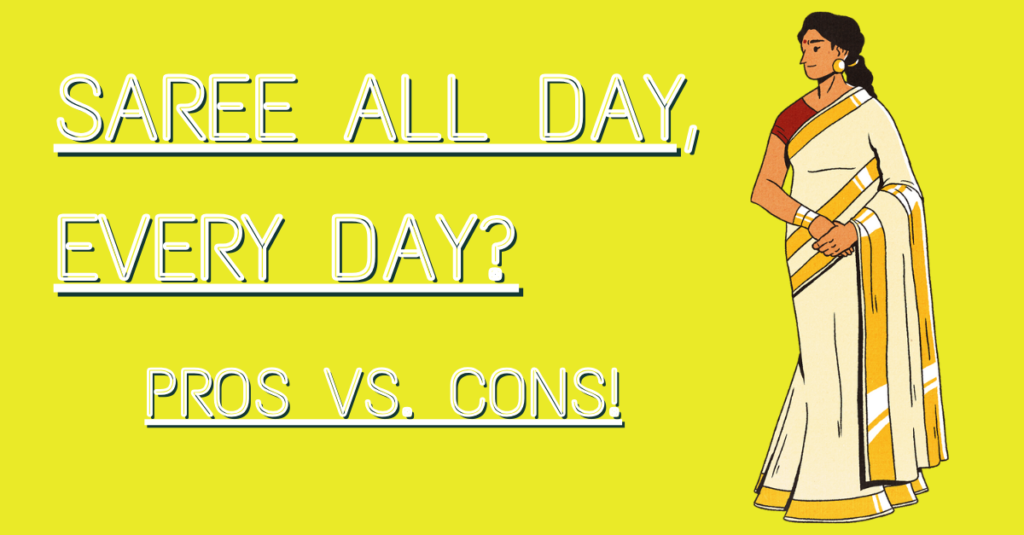What is a Work Portfolio, and How Do You Create One?
Introduction
In a world where first impressions often mean everything, a well-constructed work portfolio can be your secret weapon for standing out in the professional arena. Whether you’re a job seeker looking to land your dream position, a freelancer aiming to attract high-paying clients, or a professional seeking to showcase your expertise, a work portfolio is an invaluable tool that can make all the difference.
But what exactly is a work portfolio, and how can you create one that truly shines? In this article, we will embark on a journey to unravel the significance of work portfolios in various fields and explore the essential steps to craft a compelling one. We will delve into the different types of portfolios, what to include within them, and how to organize and maintain your portfolio for maximum impact. By the time you finish reading, you’ll be well-equipped to craft a work portfolio that not only highlights your skills and achievements but also propels your career to new heights.
What is a Work Portfolio?

A work portfolio is a curated collection of your best work, showcasing your skills, accomplishments, and expertise in a particular field or profession. It’s essentially a visual representation of your professional journey, demonstrating the quality and depth of your work. Work portfolios are not limited to a single industry or profession; they can be utilized in various fields, including but not limited to graphic design, writing, web development, photography, marketing, education, and more. The primary purpose of a work portfolio is to present evidence of your abilities and experiences to potential employers, clients, or collaborators.
The Importance of a Work Portfolio
Why is it so crucial? Let’s dive into the reasons behind the significance of a work portfolio.
1. Showcase Your Skills and Accomplishments
Perhaps the most compelling reason to create a work portfolio is the ability to showcase your skills and accomplishments effectively. Instead of merely telling potential employers or clients what you can do, you can show them. Whether you’re an artist, writer, software developer, marketer, or professional in any other field, your portfolio allows you to present your best work, providing a clear picture of your abilities.
For example, a graphic designer can display a range of design projects, from logos to website layouts, to demonstrate their versatility and creativity. An engineer can showcase successful projects, illustrating their problem-solving skills and technical expertise. In each case, the work portfolio becomes a visual testament to the quality of your work.
2. Differentiate Yourself from Competitors
In a competitive job market or when vying for clients as a freelancer, having a work portfolio can set you apart from others. It shows that you’re proactive and well-prepared, putting you in a league of your own. When employers or clients have multiple candidates to choose from, a compelling portfolio can be the deciding factor that lands you the job or project.
Imagine two equally qualified candidates applying for a marketing position. One submits a comprehensive portfolio with examples of successful campaigns, while the other simply submits a resume. The first candidate, with their portfolio, not only demonstrates their expertise but also shows they’ve gone the extra mile to prove their worth. That initiative can be a game-changer.
3. Support Job Applications and Interviews
A work portfolio is not only beneficial for job applications but also for interviews. During an interview, you can refer to your portfolio to provide concrete examples of your achievements and experiences, making your responses more convincing and memorable. It helps you tell your professional story in a compelling way.
For instance, if you’re interviewing for a project management role, you can use your portfolio to walk the interviewer through past projects you’ve successfully managed, complete with project plans, budgets, and outcomes. This visual aid not only showcases your skills but also reassures the interviewer of your capabilities.
4. Track Personal and Professional Growth
Your work portfolio is not just a tool for impressing others; it’s also a valuable record of your personal and professional growth. Over time, it can serve as a visual timeline of your career, highlighting your progress and development. You can look back at your earlier work and see how far you’ve come.
This reflection can be motivating and offer a sense of accomplishment, particularly during moments of doubt or career transitions. It’s a reminder of the goals you’ve achieved, the challenges you’ve overcome, and the knowledge you’ve gained. Your portfolio becomes a dynamic document that evolves with your career.
Types of Work Portfolios

Work portfolios come in various forms, each catering to different needs and preferences. Depending on your field, objectives, and personal style, you can choose from the following types:
1. Traditional Physical Portfolios
Physical portfolios are tangible collections of printed documents, images, or other materials. These may include high-quality prints of your work, certificates, letters of recommendation, and any other physical items relevant to your profession. Physical portfolios are particularly relevant in fields like art, architecture, and design.
Advantages:
- Tangible and visually striking.
- Ideal for in-person interviews and meetings.
Limitations:
- Less easily shareable online.
- Prone to wear and tear.
2. Digital Portfolios
Digital portfolios, created using online platforms or tools, have become increasingly popular in today’s tech-savvy world. They offer a convenient way to store and share your work with a global audience. Digital portfolios are suitable for a wide range of professions, from writers and photographers to programmers and marketers.
Online platforms and tools:
- Personal websites or blogs
- Portfolio-specific platforms like Behance, Dribbble, or GitHub
- PDF documents or PowerPoint presentations
Benefits of going digital:
- Easily accessible to a wide audience.
- Can include multimedia elements such as videos and interactive content.
- Simple to update and maintain.
3. Hybrid Portfolios
Hybrid portfolios combine both physical and digital elements, offering the best of both worlds. For instance, you might have a digital portfolio hosted on a personal website and supplement it with a physical portfolio for in-person meetings or presentations. This approach caters to various scenarios and ensures that your work is accessible in multiple formats.
Your choice of portfolio type should align with your objectives and your target audience. For job seekers, a digital portfolio is often more practical, while certain professions, like architects or fashion designers, may still benefit from a traditional physical portfolio.
What to Include in Your Work Portfolio

The content of your work portfolio will depend on your industry and profession. However, there are some common elements that should be present in most portfolios:
- Resume or CV: Begin your portfolio with a well-crafted resume or curriculum vitae that provides an overview of your background, skills, and professional experience.
- Work Samples: Include a variety of work samples that showcase your skills and accomplishments. These could be images, documents, videos, or links to projects you’ve completed. Make sure to choose your best work to create a strong impression.
- Descriptions and Explanations: For each work sample, provide a brief description or explanation of the project, your role, and the skills you utilized. This helps the viewer understand the context and significance of your work.
- Testimonials and References: If possible, include testimonials or references from satisfied clients, colleagues, or employers. These endorsements add credibility to your portfolio and demonstrate your professionalism.
- Personal Statement: Write a personal statement that conveys your career goals, values, and aspirations. This adds a personal touch to your portfolio and helps viewers connect with you on a deeper level.
- Awards and Recognition: If you’ve received any awards, honors, or recognitions for your work, be sure to highlight them in your portfolio. These accolades serve as evidence of your excellence.
- Educational Background: Include information about your educational background, including degrees, certifications, and relevant coursework. This can be particularly important for certain professions, such as teaching or research.
- Skills and Abilities: Create a section that lists your skills and abilities, both technical and soft skills. This provides a quick overview of your capabilities to potential employers or clients.
- Contact Information: Make it easy for interested parties to get in touch with you by including your contact information, such as email, phone number, and professional social media profiles.
How to Organize Your Work Portfolio:

An organized work portfolio is essential to make a strong impression on your audience. Here’s how to structure and organize your portfolio effectively:
- Start with a Table of Contents: Begin your portfolio with a table of contents that lists all the sections and their corresponding page numbers. This helps viewers navigate your portfolio efficiently.
- Arrange Work Samples Strategically: Group similar work samples together, and arrange them in a logical order. For example, you might organize your work chronologically, by project type, or by skill category.
- Use Visual Hierarchy: Pay attention to the visual layout of your portfolio. Use headings, subheadings, and formatting to create a clear visual hierarchy. Make sure your portfolio is visually appealing and easy to read.
- Keep It Concise: While it’s important to showcase your best work, avoid overwhelming your audience with too much content. Select your most impactful pieces and provide concise descriptions.
- Maintain Consistency: Use a consistent format, font, and style throughout your portfolio to create a cohesive and professional look.
- Update Regularly: Your portfolio should evolve with your career. As you gain new skills and complete new projects, be sure to update your portfolio to reflect your latest work and achievements.
- Consider the Audience: Tailor your portfolio to your target audience. If you’re seeking a job, emphasize your skills and experiences relevant to the position. If you’re attracting clients, showcase your best projects that align with their needs and interests.
- Seek Feedback: Before finalizing your portfolio, seek feedback from colleagues, mentors, or professionals in your industry. They can provide valuable insights and suggestions for improvement.
How to Create Your Work Portfolio:

Now that you have a clear understanding of what a work portfolio is and what it should include, let’s go through the steps to create one:
- Identify Your Goals: Start by clarifying your objectives. Are you creating a portfolio to land a job, attract clients, showcase your work, or achieve specific career goals? Knowing your purpose will guide your portfolio’s content and structure.
- Gather Your Work: Collect your best work samples, documents, images, or links. Ensure that they are of high quality and relevant to your goals. If you need to, update or polish any outdated or subpar work.
- Choose the Right Format: Decide whether you want a traditional print portfolio, a digital portfolio, or an e-portfolio. Your choice should align with your profession and the preferences of your target audience.
- Select a Platform: If you opt for a digital portfolio, choose a platform or website builder to host your portfolio. Popular options include WordPress, Squarespace, Wix, Behance, and many others. Make sure the platform suits your needs and is user-friendly.
- Organize and Create Content: Structure your portfolio by arranging work samples in a logical order. Write descriptions or explanations for each piece, highlighting your role, skills, and achievements. Ensure that your portfolio is visually appealing, well-organized, and easy to navigate.
- Design the Portfolio: Pay attention to the design of your portfolio, including layout, colors, and typography. A clean and professional design will leave a positive impression on viewers.
- Proofread and Edit: Carefully proofread all written content in your portfolio to eliminate errors and ensure clarity. Make sure your personal statement and descriptions are well-crafted and engaging.
- Include Contact Information: Ensure that your contact information is prominently displayed in your portfolio so that interested parties can easily reach out to you.
- Test Your Portfolio: Before sharing your portfolio with others, thoroughly test it to ensure that all links and multimedia elements work as intended.
Maintaining and Updating Your Work Portfolio
A static portfolio can quickly become outdated and less effective. To maximize the impact of your portfolio, it’s essential to maintain and update it regularly:
1. Regular Updates and Revisions
Set a schedule for updates. This could be monthly, quarterly, or annually, depending on your profession. Regular updates ensure that your portfolio stays current and reflects your most recent work and accomplishments.
2. Adding New Achievements and Projects
Whenever you complete a significant project or receive an award, add it to your portfolio promptly. Keep a running list of achievements and work you want to include, so you don’t forget any essential additions.
3. Removing Outdated or Irrelevant Content
As you add new content, also consider removing outdated or less relevant materials. An overcrowded portfolio can dilute the impact of your best work. Keep it focused on your strengths and most recent accomplishments.
Conclusion
In conclusion, a well-constructed work portfolio is an indispensable asset in the professional world, serving as a powerful tool for showcasing your skills and achievements. This article has shed light on the significance of work portfolios, emphasizing their ability to effectively showcase skills, differentiate individuals from their peers, support job applications and interviews, and serve as a valuable record of personal and professional growth.
The article also discussed various types of work portfolios, including traditional physical, digital, and hybrid formats, providing insights into what to include and how to organize them for maximum impact. To create a compelling work portfolio, it is crucial to identify your goals, gather high-quality work samples, choose the right format, and regularly update and maintain its content. A well-organized and up-to-date work portfolio not only reflects your professional journey but also serves as a dynamic tool for career growth and success.

My name is Rohit Vagh and I’m a content writer specializing in fashion and lifestyle. I have three years of experience in this field and have written various articles. My writing style is creative and engaging, and I strive to create content that resonates with my readers. I have a deep passion for fashion and am constantly researching the latest trends and styles to make sure my readers are up to date. I’m excited to continue my career in blogging, and I’m always looking for new opportunities in the fashion and lifestyle space.





